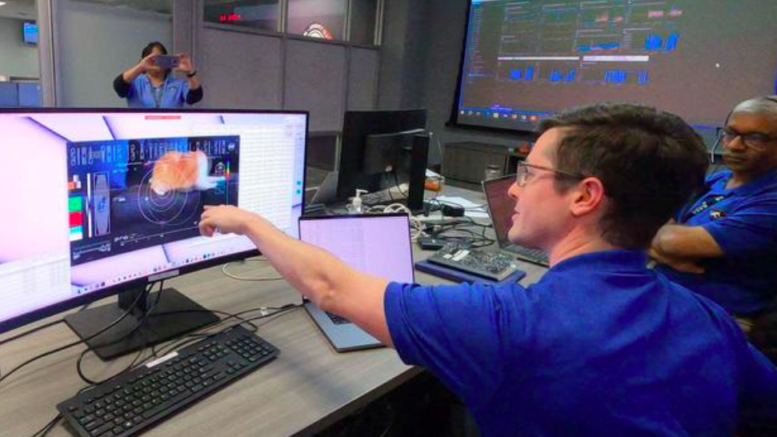NASA’s Groundbreaking Achievement: Beaming Cat Videos from Deep Space
NASA, the renowned space agency, has achieved a groundbreaking milestone in space communication by successfully beaming an ultra-high-definition video of a cat named Taters from nearly 19 million miles away back to Earth. This historic achievement marks a significant step forward in the development of deep space communication capabilities, with implications for future interplanetary missions and the potential for advancing human exploration beyond Earth’s orbit.
The 15-second video of Taters, an orange tabby owned by a Jet Propulsion Laboratory employee, was part of an experiment for NASA’s Deep Space Optical Communications. While animals, including the famous cat Félicette, have been sent to space in the past, Taters remained on Earth. The video of Taters chasing the red dot of a laser pointer was uploaded to NASA’s Psyche asteroid probe, a $1.2 billion mission launched in October. Psyche is on a six-year, 2.2-billion-mile journey to explore a rare, metal-rich asteroid that could provide insights into the formation of rocky planet cores.
The experiment involved using a flight laser transceiver to beam the video as an encoded near-infrared laser from the Psyche probe to the Hale Telescope at Caltech’s Palomar Observatory in California. This record-setting transmission covered a distance about 80 times that between Earth and the moon. The laser took only 101 seconds to reach Earth, showcasing the efficiency and speed of the communication system.
NASA’s successful transmission of the video from deep space to Earth is considered a historic milestone. The primary goal of the Deep Space Optical Communications experiment is to demonstrate the ability to transmit broadband video across millions of miles. Typically, data transmitted from space missions consists of randomly generated test data, but in this case, NASA opted for a fun and memorable video to capture the essence of the demonstration.
Implications for Future Space Exploration: The successful transmission of the Taters video has broader implications for the future of space exploration. As the Psyche probe continues its journey toward the main asteroid belt between Mars and Jupiter, high-data-rate signals will continue to be sent back to Earth. This increased communication capability is crucial for meeting the data transmission needs of future exploration missions.
NASA Deputy Administrator Pam Melroy emphasized the importance of advancing optical communications for achieving future exploration and science goals. The agency looks forward to further developments in this technology, anticipating its transformation in how communication occurs during future interplanetary missions.
NASA’s achievement in beaming an ultra-high-definition video of a cat from deep space to Earth represents a significant leap in the field of space communication. The success of the Deep Space Optical Communications experiment not only demonstrates the agency’s commitment to advancing technology but also opens new possibilities for enhanced communication capabilities in future interplanetary missions. As NASA continues its exploration of the cosmos, the ability to transmit high-bandwidth data from deep space will play a pivotal role in expanding our understanding of the universe and preparing for the next era of human space exploration.

